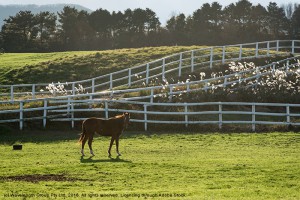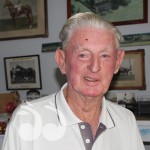Cobalt, Korea and Racing Machines
By Harley Walden
WHILE the Cobalt issue continues to plague NSW Racing, the latest case arising with country trainer Wayne Lawson having a horse return an elevated cobalt reading.
Racing NSW confirmed Stella’s Choice returned a reading above the threshold when the gelding won at Grafton on March 21.
Meanwhile across the Globe a 16-strong industry-wide task force in Ireland has produced a report announcing its recommendations for drug control in the sport following the BHA’s Equine Anti-Doping policies announced last summer.
Horse Racing Ireland (HRI) will hand a lifetime ban to any horse found to have illicitly been given banned substances such as anabolic steroids. This compares with a 14-month ban from racing in Britain for horses in a similar position.
Whereas the BBA will not allow anabolic steroids to be used at all for medical reasons, the Irish report states that in “the very rare and exceptional circumstances where a horse may need to be administered an anabolic steroid for therapeutic purposes”, the Turf Club Referrals Committee would consider the same suspension period as in Britain.
Racing in Korea
Everyone, in every part of racing and betting industries, is searching for a bigger audience, especially among the younger generation.
 Maybe one the answers can be found in South Korea, not a country that European interest would normally associate with the mainstream sport, but one that is bursting to make an impression on the world stage.
Maybe one the answers can be found in South Korea, not a country that European interest would normally associate with the mainstream sport, but one that is bursting to make an impression on the world stage.
Newly opened races, simulcasting overseas, allowing foreigners into the jobs market, eliminating a price cap on imported racehorses, and the introduction of an internationally recognised rating system: they are all examples of how the Korea Racing Authority is taking steps to make its mark.
Yet the impetus came within, from a development that sounds familiar – falling betting turnover on horseracing. Customers were losing interest and market share was falling against the rise of sports betting, casinos and online gambling.
Add the all-pervasive, Asian-centric threat from illegal gambling, which was estimated to have outstripped the legal variety by $11 billion to $7 billion a year, and Korean racing officials realised they had reached a watershed.
They needed to change people’s negative perception to horse racing, as well as to recapture general interest.
Along with taking innovative international measures, one of their answers was to turn Korea’s three racecourses into the equivalent of family theme parks, with the horse as the centrepiece.
All three have been rebranded LetsRun Park in a marketing campaign that binds them together
Seoul racecourse, which grew out of the equestrian facility at the 1988 Olympics, has centre-course space for children to ride ponies, as well as horse simulators, a paddling pool in summer that converts to a skating rink in winter, and an equine museum.
Busan, the newest of the three, has similar interactive while Jeju, which runs a program of pony racing for native Korean breed, has a garden area where visitors can observe various breeds from Shetlands to Clydesdales.
A fourth racecourse, at Yeongcheon, north of Busan, is planned to open in July 2020, and will follow the same horse-park theme.
A number of British racecourses have dabbled in equestrian themes.
Chester has its polo; Aintree has a thriving indoor arena, which was in use on 20 days in January, including for a three-day elite show jumping event.
But none has gone the distance in terms of emulating Korea’s equine parks.
The Korean example encourages families, including the all-important decision-makers of women and children; it develops a community spirit and encourages education about and familiarity with the horse.
The growing lack of contact with horses goes much further back than the millennial generation.
Best of all, at least as far as the male punters, who are in the majority, are concerned, the equestrian theme park provides a convenient spot to park the family, in safety but close proximity.
For an afternoon’s solid uninterrupted entertainment.
Racing Machines in Texas
On January 30, Sam Houston Race Park in Houston, Texas held its top thoroughbred programme of the year, ten races on an evening featuring a $200,000 turf contest and a $400,000 dirt race for fillies and mares.
The racing was a diversion from the legislative setbacks encountered by the Lone Star State’s racing business in the last twelve months.
Through much of 2015, Texas horsemen and racing executives sought to supplement an alternative form of gambling at tracks, through a variation of a slot machine called historical racing.
Officials have hoped historical racing machines will boost the bottom line for racecourses and give purses at the state’s three leading tracks a much needed boost.
This issue has resulted in a long-running dispute between state-appointed racing officials and elected members of the Texas legislature, leading to a brief shutdown of one day last August.
On February 18, the TRC convened an emergency meeting, at which members voted 5-4 to repeal the 2014 legislation created to legalise the slot machines, thereby dashing hopes of boosting purses for racing.
Historical racing machines have become popular in the United States in the last decade.
The machines allow customers to place bets on a video replay of a race run years ago on terminals with characteristics of Los Vegas-style slot machines.
Bettors are unable to identify the races being run, giving the machines a random result.
Some states have approved the machines for their racecourses, which have been successful at Oaklawn Park in Arkansas and Kentucky Downs, while other states have been unsuccessful in gaining approval.
Revenue from historical racing machines has boosted purses for horsemen at some American tracks.
Geographically, Texas is in a difficult spot.
The surrounding states all have an alternative form of wagering in addition to racecourse pool betting.
Tracks in Louisiana, New Mexico and Oklahoma have slot machines and robust circuits that have thrived with alternative gaming in the last 15 to 20 years.
Oaklawn Park is the only racecourse in Arkansas and has one of the most prominent thoroughbred meetings in the United States from late January to mid-April.
Because those states have increased purses, the Texas breeding industry has suffered considerably, with mares and stallions relocating to neighbouring states.
It is not uncommon for Texas-based owners to focus on running elsewhere.
Thoroughbred racing in Texas has never reached the heights expected after a state wide referendum legalised tote wagering in 1987.
The first track to open – G Rolle White Downs in Brady in the middle of the state, away from population centres – opened in the fall of 1989. It closed within two months.
A circuit of small tracks has catered to quarter horses and lower-level thoroughbreds opened and failed in the following decade.
Currently, there are four tracks in the state – Sam Houston opened in 1994, followed by Retama Park, near San Antonio, in 1995, and Lone Star Park, between Dallas and Fort Worth, in 1996.
A county fair meeting has been held each summer in Fredericksburg, since 1990.
Each of the three major tracks has separate quarter horse and thoroughbred meetings through the year, providing nearly year-round circuits.
 scone.com.au
scone.com.au